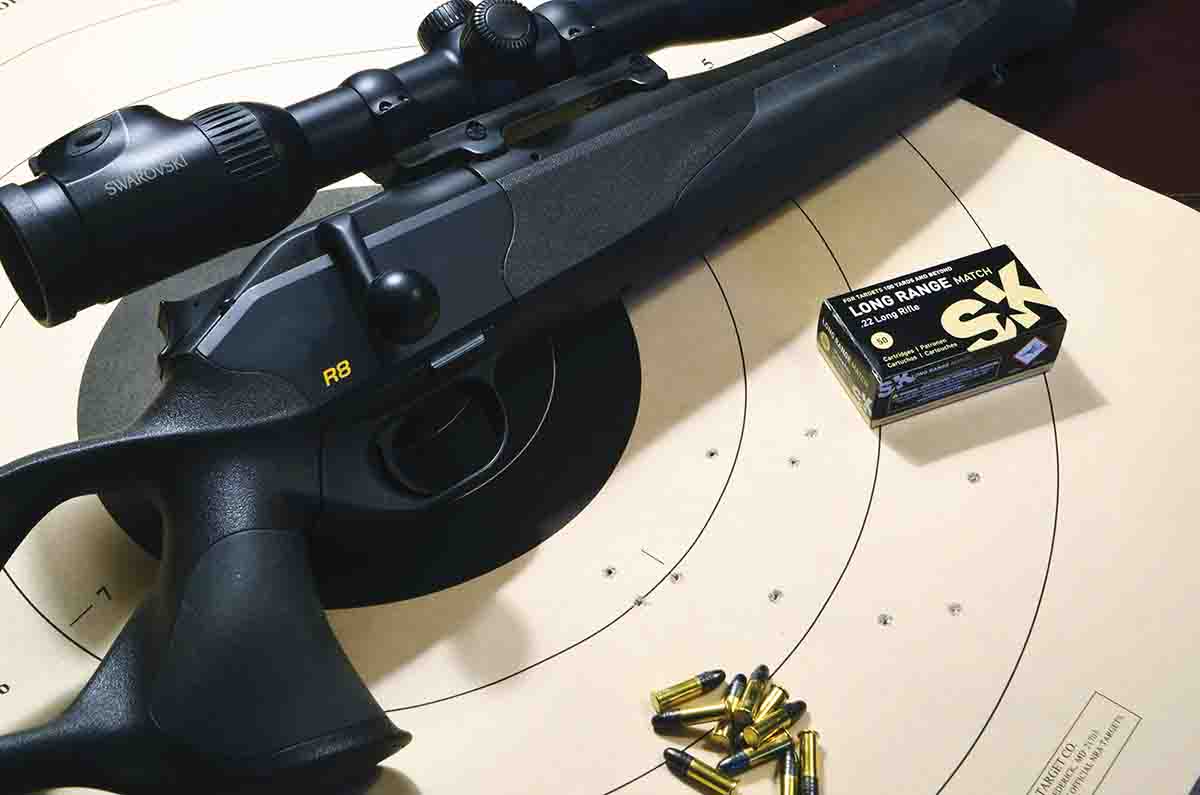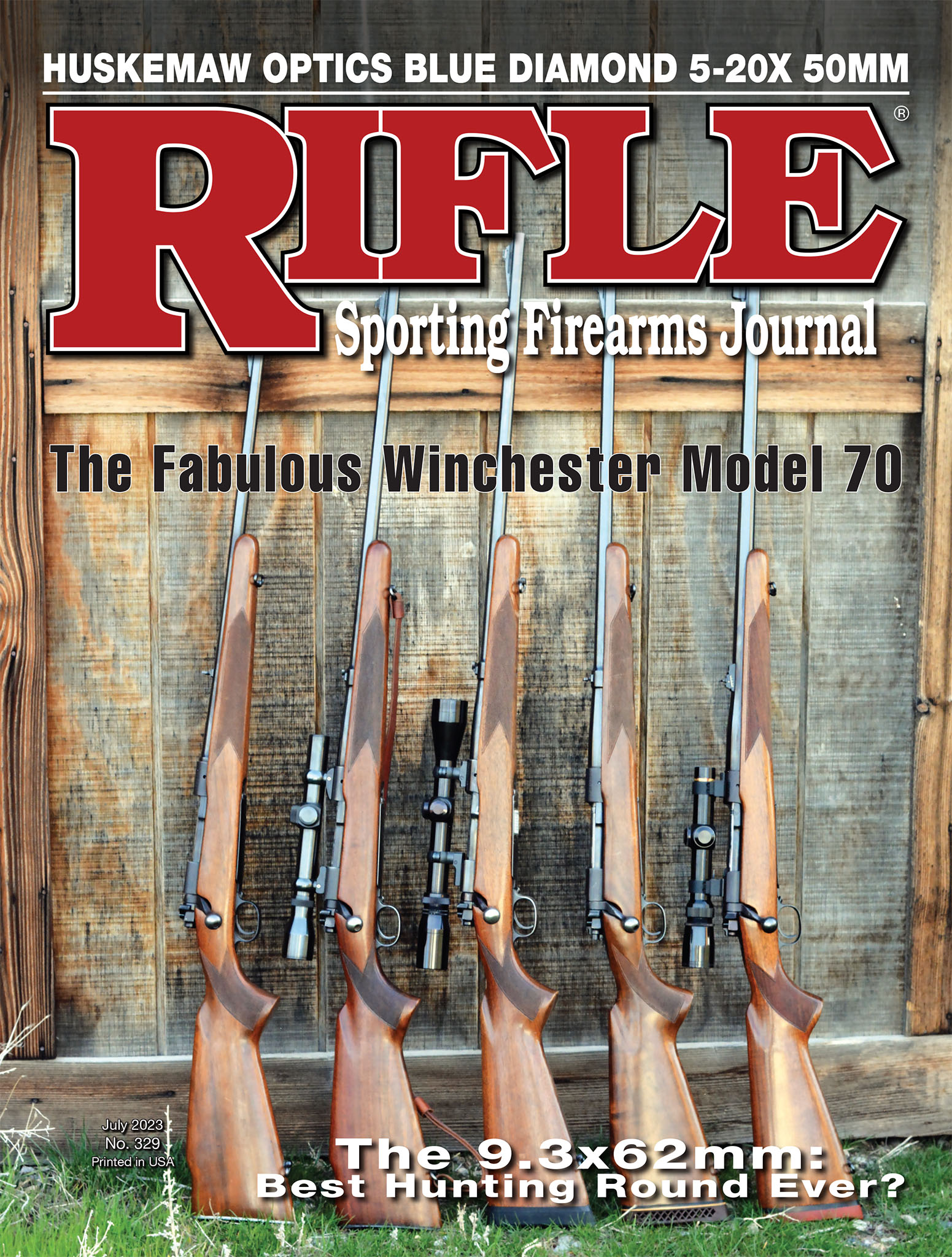Walnut Hill
The Not So Humble 22
column By: Terry Wieland | July, 23

At the time, C.S. Landis was a well-known shooter and gun writer, having competed regularly, and won occasionally, at the national smallbore championships at Sea Girt, New Jersey. He was a friend of C.C. Johnson, a famous gunsmith and target shooter and could casually drop such names as Harry Pope. I mention all this to bolster Judge Landis’s bona fides as a man one could trust, his law degree notwithstanding.
In a later chapter, Landis quoted results of long-range shooting with the target rifles and match ammunition of the time. With a 22 Long Rifle, anything over 100 yards is long range, 200 is a major challenge, and 300 near impossible. But Landis mentioned one intrepid devotee who was shooting groups at 500 yards and reporting good results.
For example, he quoted two scores from the 1931 tournament at Sea Girt, each landing 19 out of 20 shots on a 10-inch bull at 300 yards (99/100), and there were several 98s.
About 20 years earlier, he wrote, “a Capt. Richards had scored 48 out of 50 on a 10-inch bull at 500 yards. By 1932, runs of “20 to 60 consecutive bullseyes” on a 7.5-inch bull at 200 yards were so common as “not to excite comment.” Elsewhere, he wrote of bench shooters recording 10-shot, 4-inch groups at 200 yards.
All of this made me wonder: If they could do this in 1931, with the rifles and ammunition then available, what might be possible now?
I happened to have a brick of SK Long Range Match – ammunition specifically intended for ranges longer than 100 yards – and three pretty good rifles: A Blaser R8 with their new 22 RF barrel, a Steyr Zephyr II, and for a period piece, a Stevens Ideal Model 49 “Walnut Hill,” which would have been 22 Long Rifle state of the art about the time Landis’s Capt. Richards was scoring his 500-yard bulls.
The Blaser is fitted with a Swarovski Z6i 2.5-15x 44mm P HD and the Steyr with a Leupold VX-II 2-7x 33mm, while the Stevens has a set of Lee Shaver’s Soule-type midrange tang sight and globe front sight, replacing the original (but damaged) Stevens target sights.
Four trips to the range later, I had all three sighted in – the Stevens for 300 yards, the other two for only 200. Why four? Well, I’ll tell you.
What I should have done before I ever went near the range was print out a trajectory chart to see exactly what I was up against, rather than relying on memory, hit and miss, and trial and error to move the zero from 50 yards to 300. I figured to check the sighting at 50, see how low it was at 100, adjust, move to 200 and so on. Unfortunately, with a 40-grain bullet and a ballistic coefficient around .130, a 100-yard difference in range involves a drop, not of a few inches, but a couple of feet… and moving out to 300? The drop is measured in yards.
For example, if you are zeroed at 100 yards and shoot at 200, the drop is 38.47 inches, according to ShootersCalculator.com, a very handy website I recommend highly. If you then zero at 200 and shoot at 300, the drop is another 70 inches, or almost 6 feet. On a scope with ¼-inch clicks, making the adjustment at 100 yards, where the bullet is 42.7 inches high on its way to the 300-yard bull, you would need to raise it 171 clicks.
That is more adjustment that either of my two scopes will accommodate, which is why they are both now sighted for 200 yards, which is where I shot my groups.
Are you thinking I could have put up two targets at 300 yards, with 69.87 inches between the centers, and aim at the top one and see where the bullets land on the lower one? That’s what I thought, too, except our 300-yard target board is only 4-feet deep, and it hardly seemed worthwhile to put up a larger target board just for this.
The logistical and practical difficulties of shooting a 22 Long Rifle at 300 yards kept piling up relentlessly.
Along the way, I consulted Lee Shaver, who is a long-range black- powder shooter of considerable renown, and he told me he shoots 22s at 310 yards for practice. He does not have a 1,000-yard range near Lamar, Missouri, but he can set up a target at 310 yards, which with a 22 is an exact scaled-down duplication of 1,000 yards with his large-bore target rifle.
Since he makes Soule-type sights for use in long-range, black-powder matches, they can easily be adjusted to accommodate extreme drop. In fact, working with my Stevens, I found it easier to make adjustments and find the correct settings than I did with the two scopes.
Lee also told me of a group in Montana that have embraced the 22, and shoot 500-yard silhouette matches with them. Given the winds in Montana, hitting anything at 500 yards with a 22 LR will involve a considerable element of luck, but since it’s all for fun anyway, why not?
On my fifth trip to the range, I tacked up two targets at 200 yards, and one at 300. These were NRA 50-yard, slow-fire pistol targets measuring 21x24 inches, with black 8-inch bullseyes. At 300 yards, I backed it up with another sheet of paper that added 9 more inches in depth and it’s a good thing I did.
At 300 yards, that bullseye looked like a black pinhead and swam in and out of focus as I attempted to get the spirit level right, the bull centered in the front-sight aperture, and that centered in the tang aperture. Ideally, I would have had a larger bull – they did have larger bulls in the old days of Schützen – and smaller apertures, but at that point I’d run out of both time and patience.
I shot 10 rounds at 300 yards, five of which printed on the backing paper 18 inches below the X-ring and spread out 10 inches side-to-side. Presumably, the other five were lower still. Given the consistency, I put the spread down to the blustering wind on that icy March day.
At 200 yards, the results were much better. The Steyr’s group was 7.5 inches (6.5 with a flyer) while the Blaser’s was 5.25 inches. Both printed about 6 inches low, however. I suspect the culprit was an incorrect ballistic coefficient entered in the trajectory program. Or, I could have had lower velocity because of the cold day. With that cartridge, at those distances, all it takes is the slightest discrepancy.
While not everything went according to plan, I did determine that with modern match ammunition, and modern rifles with excellent scopes, I can pretty much duplicate the results C.S. Landis’s friends were getting a century ago. This may or may not be progress.
On the bright side, it was certainly a learning experience.


